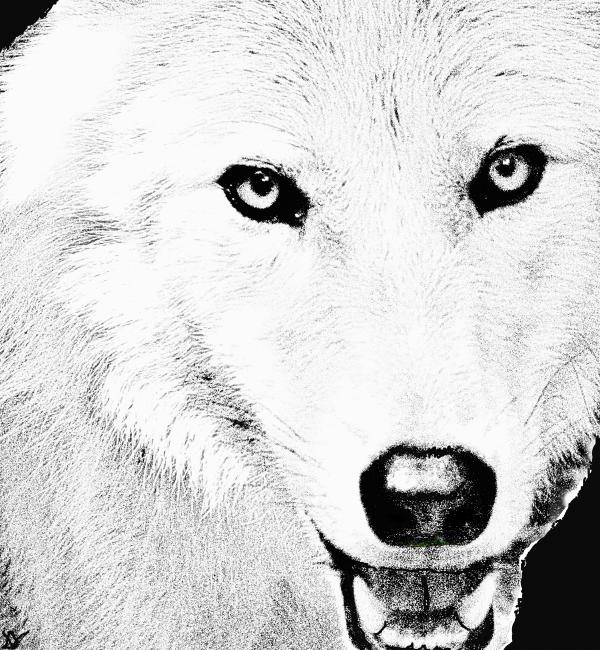Post by someoldguy on Nov 27, 2013 16:43:15 GMT -5
Even a man who is pure in heart
And says his prayers by night
May become a wolf when the wolfbane blooms
And the autumn moon is bright
This poem, recited several times in The Wolfman (1941), is an important plot element, introducing the idea of the werewolf as more victim than villain. Yet if we analyze it carefully some problems become apparent.
There is the rather minor one of spelling: the word is wolfsbane, i.e., wolf’s bane. But the tradition of ‘wolfbane’ was already established in Dracula (1931), the plant apparently being a problem for vampires. (Actually it would be a problem for anyone, being highly toxic and even dangerous to handle.) So I will continue with the common if incorrect spelling.
The other problems are more serious.
The autumn moon… Horror movie tradition generally has it that a werewolf transforms every full moon (or near full), not just in autumn. There are usually three full moons in that season. (There is sometimes a fourth but that happens only once in a blue moon. ;D) Taken literally that would leave the werewolf off the hook for nine months every year.
Actually, if one does a little research, one discovers that wolf(s)bane only blooms in June and July. [1], neither of those months being in autumn. Transforming at all seems to have become quite problematic.
Notice that the poem does not explicitly reference a full moon, merely one that is bright. Even half moons can be bright if the weather is good.
Subsequent movies featuring the Wolfman, e.g., the sequel Frankenstein Meets the Wolfman, change the last line of the poem to “when the moon is full and bright”. This would allow year round werewolfery if it were not for that pesky wolfbane.
Let us return to the spelling difference and build a hypothesis on it. Let us imagine that in the world of horror movies there is a plant called wolfbane (no ‘s’) that is not the same as wolfsbane and that this plant blooms around the time of the full moon regardless of the time of year. If it bloomed all the time, there would be no need to mention it at all. Linking it to the full moon becomes poetic license. Making it a different plant also avoids the problem in The Wolfman where Jenny actually picks wolfbane blooms, something she would not have done if it were extremely poisonous.
So, problems solved.
[1] www.luontoportti.com/suomi/en/kukkakasvit/northern-wolfsbane
And says his prayers by night
May become a wolf when the wolfbane blooms
And the autumn moon is bright
This poem, recited several times in The Wolfman (1941), is an important plot element, introducing the idea of the werewolf as more victim than villain. Yet if we analyze it carefully some problems become apparent.
There is the rather minor one of spelling: the word is wolfsbane, i.e., wolf’s bane. But the tradition of ‘wolfbane’ was already established in Dracula (1931), the plant apparently being a problem for vampires. (Actually it would be a problem for anyone, being highly toxic and even dangerous to handle.) So I will continue with the common if incorrect spelling.
The other problems are more serious.
The autumn moon… Horror movie tradition generally has it that a werewolf transforms every full moon (or near full), not just in autumn. There are usually three full moons in that season. (There is sometimes a fourth but that happens only once in a blue moon. ;D) Taken literally that would leave the werewolf off the hook for nine months every year.
Actually, if one does a little research, one discovers that wolf(s)bane only blooms in June and July. [1], neither of those months being in autumn. Transforming at all seems to have become quite problematic.
Notice that the poem does not explicitly reference a full moon, merely one that is bright. Even half moons can be bright if the weather is good.
Subsequent movies featuring the Wolfman, e.g., the sequel Frankenstein Meets the Wolfman, change the last line of the poem to “when the moon is full and bright”. This would allow year round werewolfery if it were not for that pesky wolfbane.
Let us return to the spelling difference and build a hypothesis on it. Let us imagine that in the world of horror movies there is a plant called wolfbane (no ‘s’) that is not the same as wolfsbane and that this plant blooms around the time of the full moon regardless of the time of year. If it bloomed all the time, there would be no need to mention it at all. Linking it to the full moon becomes poetic license. Making it a different plant also avoids the problem in The Wolfman where Jenny actually picks wolfbane blooms, something she would not have done if it were extremely poisonous.
So, problems solved.

[1] www.luontoportti.com/suomi/en/kukkakasvit/northern-wolfsbane


 Le Loup-Garou Qui Rit
Le Loup-Garou Qui Rit